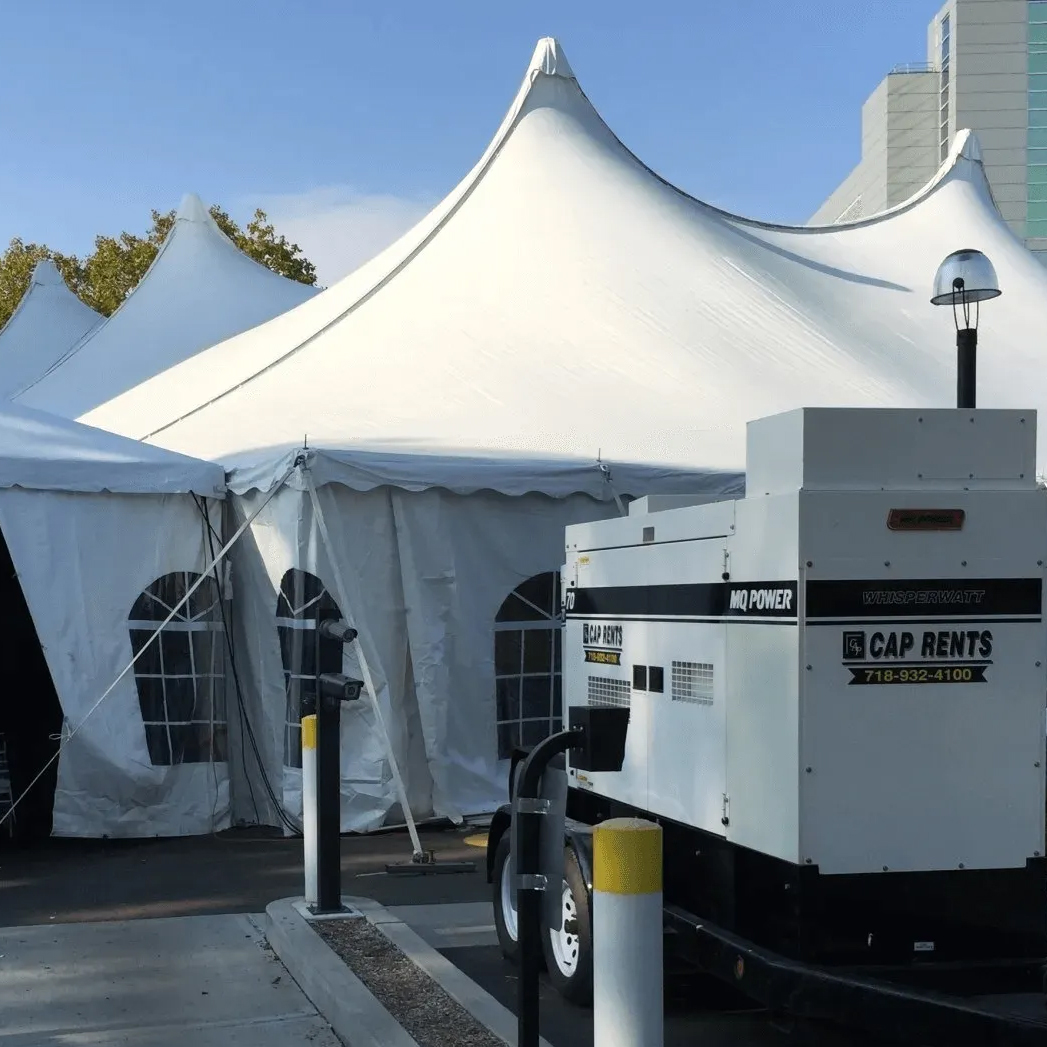
Heating and Cooling Solutions for Outdoor Weddings on Long Island
Outdoor weddings along Long Island’s beaches, vineyards, estates, and backyards have a natural romance that indoor venues can’t match. But weather comfort plays a major role in the guest experience. Ocean breezes can feel refreshing one moment and chilly the next. Summer humidity can make even a shaded tent feel warm before sunset. And early autumn evenings can cool down quickly.
The goal is to design temperature comfort intentionally, so guests feel taken care of from ceremony to last dance.
This guide walks through effective heating and cooling options, how to choose the right approach based on season, tent style, and venue location, and practical planning tips to keep everything comfortable and seamless.
How Long Island’s Climate Impacts Outdoor Weddings
Long Island’s coastal climate shifts throughout the day. Afternoon sun can create warmth that lingers inside tents, while later in the evening, maritime air brings a noticeable drop in temperature.
If your ceremony is at 4:30 p.m. and reception runs past 10 p.m., the space needs to feel comfortable across both temperature phases. It’s not just about heating or cooling—it’s about maintaining consistency.
Comfort has a direct effect on atmosphere:
When guests are comfortable, they stay engaged, socialize, and enjoy the experience.
When they’re uncomfortable, they retreat: to shade, to coats, to cars.
Maintaining temperature = maintaining energy.
Cooling Solutions for Spring and Summer Weddings
When planning a warm-weather wedding, the right cooling setup should manage sun, airflow, and humidity—not just temperature.
High-Output Tent Fans
Used to create directional airflow inside frame, sailcloth, and clear-top tents. They prevent stagnant warm pockets and keep guests comfortable, especially during transition periods between ceremony and dinner.
Evaporative Coolers or Misting Fans
Ideal for humid afternoons. They cool the air without overwhelming the space or disrupting décor.
Air-Conditioned Tent Systems
Best for large guest counts, formal setups, or when the wedding falls during peak summer heat. These systems require tent sidewalls to maintain efficiency, so the cooling is intentional and controlled.
Shade Planning
If part of the wedding is outside the tent (ceremony, cocktail hour, photos), portable or structured shade elements help prevent heat fatigue early on, so guests enter the reception comfortable, not drained.
Heating Solutions for Fall and Early Spring Weddings
Long Island autumn weddings are gorgeous—foliage, golden light, crisp air. But evenings cool quickly, especially near the water.
Forced-Air Tent Heaters
Installed outside the tent with vents positioned discreetly along the perimeter. They warm the space evenly and quietly.
Patio Heaters
Perfect for lounge areas, cocktail zones, and transitional outdoor walkways. They keep interaction flowing rather than forcing guests inside prematurely.
Heated Sidewalls
Used strategically—not to “seal” the tent fully, but to hold warmth while still allowing airflow. The idea is balance, not enclosure.
How Tent Style Affects Temperature Control
Not every tent holds or disperses heat the same way. Understanding your tent’s behavior helps prevent surprises.
Clear Top Tents: Magnify heat during daytime. Gorgeous at night. Best paired with cooling earlier and gentle heating later.
Sailcloth Tents: Natural diffusion of light and airflow. Ideal for coastal breezes and comfortable climates.
Frame Tents: Most flexible—easy to ventilate, enclose, or control with HVAC options.
Choosing heating/cooling is not separate from choosing a tent. They work together.
How to Decide What Your Wedding Needs
Use this simple decision guide when planning temperature comfort:
Note your date and time—sunset time affects comfort more than the season alone.
Identify venue exposure—open shoreline vs. tree-covered backyard behave differently.
Confirm tent type—clear tops require planning earlier than frame tents.
Estimate guest density—more bodies = more heat.
Decide the priority feel—airy, glowing, cozy, or crisp.
Good planning means you don’t “fight the weather”—you design around it.
FAQs
How early should I book heating or cooling equipment?
If your wedding is May–October or October weekends, reserve early. Temperature equipment books fast, especially during peak event dates.Will heating or cooling equipment be visible inside the tent?
The equipment is typically placed outside or disguised. Ducting and vents are positioned to blend into the layout.Do I need sidewalls to heat or cool a tent?
Not always. Sidewalls help retain temperature, but they can be rolled up or down throughout the event to balance airflow.Can I switch from cooling to heating in the same event?
Yes. Many Long Island weddings do exactly that, especially sunset weddings transitioning into evening receptions.
Conclusion
Temperature comfort is a major part of guest experience, even though most of the planning focus tends to go to décor and layout. When heating and cooling is planned with intention, guests feel relaxed, the atmosphere feels natural, and the celebration flows effortlessly from day to night. With the right tent, timing, and equipment choices, outdoor weddings on Long Island can stay comfortable, beautiful, and memorable—no matter the weather.